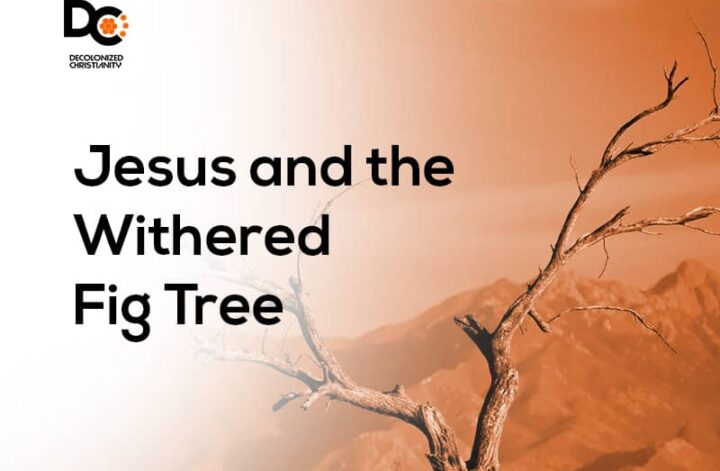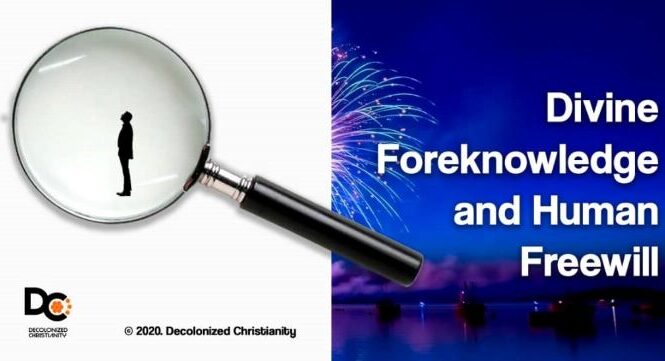The First Fig Tree Encounter
Having demonstrated that the Gospel of Mark (and all bible books) is a piece of intelligent writing involving careful human writer decisions featuring some literary techniques of the day, we are now ready to wrestle with some issues with the fig tree story.
Here is Mark 11:11-14,
Jesus entered Jerusalem and went into the temple courts. He looked around at everything, but since it was already late, he went out to Bethany with the Twelve. The next day, as they were leaving Bethany, Jesus was hungry. Seeing in the distance a fig tree in leaf, he went to find out if it had any fruit. When he reached it, he found nothing but leaves, because it was not the season for figs. Then he said to the tree, “May no one ever eat fruit from you again.” And his disciples heard him say it.
This portion is the first half of the fig tree story since Mark inserts the story of Jesus’ aggressive act in the temple into the narrative beginning from the next verse. Mark prepares the readers for an intercalation with the words, “And his disciples heard it” (11:14; emphasis added). He resumes the fig tree story with these words, “In the morning, as they went along, they saw the fig tree withered from the roots. Peter remembered…” (11:20-21; emphasis added).
Even the quoted short portion has difficulties. It is tempting for modern readers to see a somewhat irrational Jesus in this story. This is even more so when one considers Mark’s editorial comment that Jesus did not find fruits on the tree “because it was not the season for figs” (11:13). If Mark knew that it was not the time for figs, should not Jesus also know this? Furthermore, Jesus’ pronouncement on the tree that results in its withering seems quite disproportionate, if not unjust. It is like condemning a thing for not doing what it is not designed to do! And if the tree must be judged, why a death sentence? At face value, therefore, this act of Jesus does not seem fitting for rational persons. Besides, the problems with this episode continue with the concluding half of the story. The following morning, Peter pointed out to Jesus that the tree he cursed had withered (11:21). In response, Mark depicts Jesus as seizing the moment to teach on prayers and the necessity of forgiveness. But this does not seem to fit well with the context of the story: a seemingly hangry Jesus cursed a tree for perfectly doing what it is supposed to do and then uses this as an object lesson on prayer? That reads like what emperors and dictators do. In addition, for this teaching to work within the narrative, we would have to believe that Jesus’ pronouncement that “May no one ever eat fruit from you again”—something that Mark and Peter clearly understood as a curse—was meant to be a prayer to God, a prayer that God apparently answered! Something seems incongruous.
Scholars have proposed different views to make sense of the data in Mark 11. Some questions requiring consistent and data-faithful answers are: what is the literary function of Jesus’ temple-clearing and table-turning story that Mark inserts in the fig tree story? Also, do the stories shed interpretive lights on each other? We begin with Miquel’s work on this matter.
The Pervasiveness of ‘Fruitless Tree’ Metaphor in Ancient Near East
Whereas some Markan scholars view 11:22-25 as being something Jesus did not originally say, since it does not seem to fit naturally into the context, Miquel argues to the contrary. Using biblical and extra-biblical Hebrew literature, Miquel argues for a symbolic interpretation of the fig tree episode that also addresses the temple incident. She points out that what happened to the fig tree is not as extra-ordinary as it may appear to modern readers. It is a well-documented practice among ancient Jews and their Near East neighbors to destroy a fruitless tree that would not yield desired fruits after tending it for a period (146-147). Luke 13:6-9 tells a story that is relevant here:
Then he told this parable: “A man had a fig tree growing in his vineyard, and he went to look for fruit on it but did not find any. So he said to the man who took care of the vineyard, ‘For three years now I’ve been coming to look for fruit on this fig tree and haven’t found any. Cut it down! Why should it use up the soil?’ “‘Sir,’ the man replied, ‘leave it alone for one more year, and I’ll dig around it and fertilize it. If it bears fruit next year, fine! If not, then cut it down.’”
That “the man who took care of the vineyard” agrees to the destruction of the fruitless tree after an additional year suggests that this agricultural practice was common. Miquel further provides more references, including Isaiah 5:1-7, to buttress the point that farmers routinely destroyed fruitless trees and unproductive crops.
Furthermore, Miquel points out that the agricultural practice of destroying fruitless trees was often used metaphorically to refer to “individuals or human groups that deserve punishment because of their moral inadequacy” (147). This is clear in both the referenced Luke and Isaiah passages above. In the Luke passage, for example, Jesus was not interested in literal trees but symbolic ones—Jews who, after three years of active ministry, still would not accept Jesus as the promised messiah but preferred to hold on to traditions. Miquel concludes on the ubiquity of the use of this symbolism thus:
It can be assumed that Jesus’ disciples in the Marcan narrative, and the intended audience of the Gospel of Mark were well acquainted with it. … This acquaintance would predispose them to interpret Jesus’ cursing of the tree in 11:12-14 as a symbolic message somehow related to the moral condemnation of a socially relevant individual or group (147).
Besides, Miquel agrees that “the intercalation of the temple scene in the middle of the fig tree episode suggests a meaningful relationship between them” (148). Crucially, however, she argues “that the fig tree cannot stand for the temple, as some scholars have suggested. … It has to stand for a moral subject, that is, a human being or a human group” (148). She further argues that the original audience of the Gospel of Mark would have identified this “moral subject” with whoever they thought Jesus’ disruptive act in the temple was directed against — “those responsible for what Jesus denounces as a corrupt way of running the religious institution” (148). Within Mark’s narrative, the targeted human group would be the chief priests and the teachers of the law (11:18).
Jesus’ Temple Aggression
One of the most dramatic portions of Mark 11 is undoubtedly verse 11. The chapter begins with preparations for Jesus’ triumphal entry into Jerusalem as king, including the exercise of (divine) foreknowledge concerning the status of a colt as being never ridden. As Jesus made his entry, the people received him with praises that suggest that they exalted him. In conclusion of this celebratory story, Mark writes,
“Jesus entered Jerusalem and went into the temple courts. He looked around at everything, but since it was already late, he went out to Bethany with the Twelve” (11:11).
This reads like an underwhelming and anti-climactic way to wrap up a praise-charged day! It reads almost like it does not belong to the story at all. But once we notice that this verse reveals Jesus’ only opportunity to see the corruptions in the temple before his encounter with the fig tree where he would execute a performed metaphor against the temple leadership, we realize that, as Miquel points out, verse 11 “offers a bit of information without which Jesus’ symbolic curse against the fig tree would be narratively unmotivated” (148). Mark uses this verse to introduce the fig tree story and to show, within the narrative, that this is Jesus’ only encounter with the temple and its illicit practices to conclude that the temple has become a “den of robbers” (11:17).
Miquel believes that verse 11 plays a huge role in the chapter’s later teaching on prayer and forgiveness. She argues that whatever Jesus saw in the temple that evening which resulted in his “driving out those who were buying and selling”, overturning “the tables of the money changers and the benches of those selling doves” (15)—actions that would have primarily affected the poor—and not allowing “anyone to carry merchandise through the temple courts” (16), got him so irate that he would later wish that the temple and its leadership would cease to exist. Miquel writes: “The one hypothesis regarding the meaning of the Marcan Jesus’ behavior that accounts for all the data in vv 15-19 is that he rejected the commercialization of the people’s cultic relation with God, mainly because of its impact on the economy of the poor” (148-149). Indeed, there are many documents portraying the pervasive corruption that went on in that temple in the first century.
Work Cited
Miquel, Esther. “The Impatient Jesus and the Fig Tree: Marcan Disguised Discourse against the Temple.” Biblical Theology Bulletin, vol. 45, no. 3, 2015, pp. 144-154., www.academia.edu/14638383. Accessed 14 Nov. 2020.


